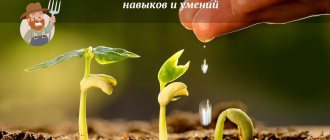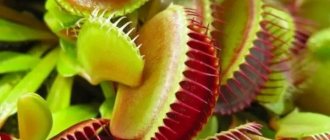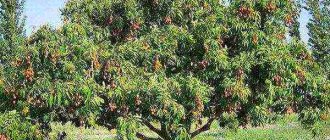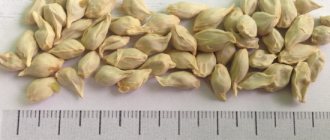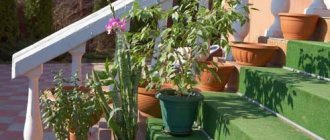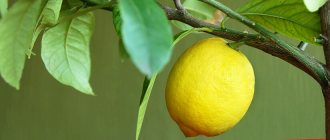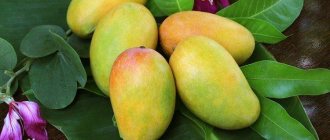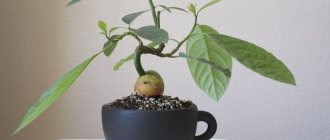Citrus
Photo: pixabay.com Lemons, tangerines, oranges, grapefruits, sweets and pomelo are the simplest fruits that can be grown at home from seeds.
They are sown in pots to a depth of 1 cm in loose soil. The pots should be kept warm at a temperature of about 25 ° C. It is important to keep the soil moist before germination, so it is better to cover the crops with film. Shoots usually appear within a week. As soon as the sprouts hatch, they need to be placed on the brightest windowsill or provided with additional lighting with a phytolamp.
At home, citrus fruits bear fruit well, but the first fruits of the seedlings appear after 10 - 15 years. But even without them, the tree will please you: if it is formed correctly, it will be fluffy. And what’s also nice is that all citruses purify indoor air because they release phytoncides.
Platycerium
Due to the unusual shape of the leaves, this variety of fern is sometimes called "flathorn". When starting to grow platycerium, keep in mind that it does not tolerate cold well. Therefore, the room temperature should not fall below 12 °C even in winter. In addition, poor lighting leads to a deterioration in the condition of the flower. But you need to forget about direct sunlight, as they lead to burns of foliage. It is best to place the flower in a warm room with diffused light, providing it with moderate watering.
- Author: iarriba
Rate this article:
- 5
- 4
- 3
- 2
- 1
(0 votes, average: 0 out of 5)
Share with your friends!
Persimmon
Photo: pixabay.com
Persimmon does not get sick and requires virtually no care (1). But this is in open ground. But growing it at home is more difficult: it will need cool conditions in winter.
The fruits must be ripe, otherwise the seeds will not sprout. And in stores they often sell unripe ones, since they last longer. To bring the fruit to ripeness, place the fruit in a bag along with a banana or apple: they release ethylene, which speeds up the ripening of persimmons. You cannot freeze persimmons: the seeds from such fruits will not sprout.
Keep the extracted seeds for two days in a weak solution of potassium permanganate. Then carry out warm stratification - keep it at a temperature of 50 ° C for 2 months (for example, you can put it on a battery). Before sowing the seeds, it is necessary to file down the hard ribs with sandpaper.
Persimmon seeds are planted to a depth of 1.5 cm in a pot with loose soil - it is better to use a mixture of sand and peat in a 1:1 ratio. Since persimmon is a deciduous tree, in winter (from the second year of life) it requires cool keeping at a temperature of 5 - 10 ° C. You can put the pot with the plant in the cellar or put it in the refrigerator (the plant does not need light during the dormant period).
Persimmons grown from seeds begin to bear fruit at 5–7 years.
Lychee
Photo: pixabay.com
This tree can also be grown at home, and without any extra tricks.
Lychee seeds extracted from the fruit lose their viability within 4 to 5 days, so they need to be sown as quickly as possible. The seed is embedded in loose soil to a depth of 2 cm. Until shoots appear, soil moisture should be high. And the temperature too – within 25 – 34 °C. Sprouts usually appear within 1 - 4 weeks, but sometimes it takes longer. The first leaves of lychee are reddish in color. As soon as they appear, the pot should be placed in a bright place.
At first, lychee grows quickly, in just a few weeks the seedlings reach a height of 20 cm. But then growth slows down: in the first 2 years, the seedling barely reaches 30 cm. This is also the norm, the plant is actively growing roots.
Lychee from the seed begins to bear fruit at 8–10 years of age (2).
Citrus fruits from seeds
The first to attract the eye are all kinds of citrus fruits, the range of which practically does not depend on the season. The number of types and forms of modern citrus fruits gives a lot of scope for memory training: orange, tangerine, lemon, lime, grapefruit, mineola, clementine, calamondin, citron, bitter orange, pomelo, kumquat... And many of the fruits eaten have quite enough seeds. Experienced sowers advise holding the seed in your mouth for a few minutes and planting it immediately without drying it out. Perhaps this is a relevant remark for some very exotic citrus fruits, the pedigree of which cannot be understood without the heraldic chamber. But lemons sprout beautifully from seeds that have been lying on a platter on the kitchen table for several days, waiting for hands to get around to planting them.
Sprouted citrus seeds
Another question is, what of the store-bought citrus fruits will grow over time? Most of them in nature are huge trees, but what comes out of each specific seed is unpredictable. Your own copy can turn out to be quite compact and cute. One thing: ungrafted citrus is unlikely to bear fruit sooner than in 7-10 years, unless special efforts are made. And then the harvest is unlikely to be impressive. You can graft wild citrus fruit grown from store-bought fruit from about one and a half years of age. A lemon, for example, by this age grows about half a meter in height with a stem thickness of about 8 mm. If you get excited about this idea, two questions will arise: what exactly to graft (which varieties of citrus fruits are bred specifically for the winter garden or indoor cultivation) and how to graft. The answer can be found in specialized literature or on the Internet. In the latter case, there is a chance to settle there forever, taking root on some citrus forum, where you will definitely learn a lot of new things. For example, where do you get trifoliate or bigardia, and at the same time, what is it, and why are they good as a rootstock if the fruits are inedible. And the list of hybrids will be replenished with limequat, orangequat, citrange, citrangella, limolames, limandarines and some tangelos.
Citrus seeds and shoots
Find out how to harvest oranges in an apartment
Mango
Photo: pixabay.com
Growing a mango from a seed is not an easy task, but it is exciting. Seeds from ripe fruits are suitable for germination. Determining the degree of ripeness of a mango is simple: if the pulp separates easily from the seed, the fruit is ripe. The removed bone should be washed thoroughly and the remaining pulp should be scraped off with a knife. And then it needs to be... split. Yes, yes, just split it, since a whole seed most likely will not germinate. Inside the seed there will be an embryo with a green sprout.
Mango is a fairly large tree, so it is better to plant the sprout immediately in a large pot. A universal primer from the store will do. The seedling is planted horizontally, so that approximately 1/4 of the seed remains above the soil surface. After this, the pot is covered with film and placed on a warm, light windowsill. Once every 2–3 days, slightly raise the edges of the shelter to ventilate and prevent the pit from rotting. After about 2 - 3 weeks, the first shoots will appear.
Mangoes begin to bloom and bear fruit at home at 6–7 years of age.
Godson Rowley
The shoots of this representative of the ragus family look like threads on which green beads are randomly strung. Due to its unusual appearance, the flower is also called “strings of pearls”. Place the ragwort in a well-lit room, avoiding direct sunlight on the plant. Water the flower only after the top layer of soil has dried, being careful not to get it on the shoots. In winter, minimize watering.
passion fruit
Photo: pixabay.com
Perhaps not everyone knows, but passion fruit is the fruit of the edible passionflower. This is a vine that not only bears fruit, but also blooms very beautifully. So at home it will become a real window decoration. But it is important to remember that passionflower is a very powerful vine and will need pruning at home, otherwise it will take up all the space available to it (3).
Seeds are sown in separate high pots. It is important to place drainage (expanded clay, crushed stone, brick chips) at least 2.5 cm high at the bottom. The soil for germination must be both loose and breathable (leaf humus, compost, sand, turf soil).
The seeds are first scarified - lightly rubbed with sandpaper. Then they are treated with any growth stimulant. Sow to a depth of 1 cm. Cover the pot with film. The optimal temperature for emergence of seedlings is 20 - 25 ° C, humidity - 75%. Shoots appear after 30 days or more. As soon as they appear, the film is removed.
Pomegranate
Bury the grains from purchased pomegranates in moist soil, always raw, without drying them out. Some shoots should appear quite quickly, in about two weeks. Others can germinate even after six months. But, in general, the similarity of the seeds is high, so be patient.
The seedlings require the same care as other indoor plants. If seedlings appear in the fall, there is no need to feed them. But it’s better to extend the daylight hours with the help of special lamps. When the pomegranate grows several narrow leaves, it is better to plant it in a separate pot.
The soil is suitable universally, as for lemon. Pomegranate can be replanted at any age, the main thing is to do it carefully. In spring, shorten the elongated branches a little and you can expect the first flowering. It can occur when the pomegranate is eight to nine months old. But this only applies to indoor pomegranates. Those bought in a store will begin to bloom at a different time, since this is a completely different variety.
Indoor pomegranate prefers a small volume of soil; it will grow a maximum of 40-50 centimeters. Regular watering, more abundant in summer, and sufficient lighting are important for pomegranates. And then your plant will begin to bear fruit.
Pitahaya
Photo: pixabay.com
The exotic pitahaya fruit is a large climbing or creeping forest cactus (Hylocereus) without thorns. Its flowers are large and fragrant. They bloom at night.
Pitahaya seeds are sown in separate pots to a depth of 0.5 cm. To prevent the soil from drying out, it is better to cover the pot with film.
Hylocereus can be grown in the shade - in nature it grows in forests, where it can do without an abundance of sun.
It begins to bear fruit at 5–7 years.
Avocado
Photo: pixabay.com
The germination rate of avocado seeds is 100%, but provided that they are collected from ripe fruits. To check for ripeness, press the fruit with your palms on both sides, then release. A ripened avocado will restore its structure.
Seeds should be planted on the day of collection. It is usually recommended to pierce them in 3 places with toothpicks and immerse them in water a third, but this requires skill, and you will have to constantly monitor the water level. So don’t worry: avocado seeds germinate well in the soil; just bury them 1/3 of the way down into loose soil. And water once a week.
Avocados do not like stagnation of water in the roots, so be sure to put 2 cm high drainage at the bottom of the pot. As soon as the seedling appears, place the pot on the brightest windowsill.
The first fruits are produced in 3–5 years.
Popular questions and answers
We talked about growing exotic fruit crops with agronomist-breeder Svetlana Mikhailova.
Will exotic fruits bear fruit at home?
If the plants are provided with proper care, they will. But you need to be patient - most fruit trees bloom in 10 - 15 years.
Where to keep exotic fruit plants at home?
Most tropical fruit plants are light-loving, so southern or eastern windows are suitable for them. But even in this case, from October to April they will need additional illumination with phytolamps for 12 hours a day.
Is it possible to grow exotic fruit plants in open ground?
All of them are heat-loving, so some of them, for example, citrus fruits, persimmons and passion fruits, can only be grown in open ground on the Black Sea coast.
In the middle zone, and even more so in the Urals or Siberia in open ground, they will die. But these plants can and even be usefully taken out into the garden in pots in the summer. And bring it back into the house for the winter. Sources
- Smirnov A.V. World of plants. Stories about cultivated plants // M.: Young Guard, 1988 – 303 p.
- Baranov V.D., Ustimenko G.V. World of cultivated plants. Directory / M.: Mysl, 1994 – 381 p.
- Dr. Hessayon D.G. All about indoor plants // M.: Kladez-Buks, 2002 – 256 p.
